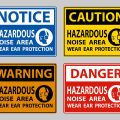1. Understanding Substrate: Why It Matters for Exotic Pets
If you’re new to keeping exotic pets, you might be surprised at how important the right substrate is for your pet’s enclosure. “Substrate” is just a fancy word for the material you put on the bottom of your pet’s habitat, like bedding or flooring. Choosing the correct substrate can make a huge difference in your exotic pet’s health, safety, and happiness.
Why the Right Substrate Is So Important
Every exotic animal has unique needs, and their substrate plays a big role in their daily life. Here are a few reasons why substrate matters:
| Reason | How It Affects Your Pet |
|---|---|
| Health & Hygiene | The right substrate helps control odor, absorbs waste, and reduces bacteria or mold growth. |
| Safety | Certain substrates prevent injuries or accidental ingestion that could harm your pet. |
| Comfort & Natural Behaviors | A good substrate allows pets to dig, burrow, climb, or hide—just like they would in the wild. |
| Humidity & Temperature Control | Some substrates help maintain proper humidity and temperature levels inside the enclosure. |
Examples of Substrate Impact on Different Exotic Pets
- Reptiles: Many reptiles need substrates that hold moisture to help with shedding and hydration, while others require dry bedding to prevent skin issues.
- Amphibians: Amphibians are sensitive to toxins and need clean, non-abrasive substrates that don’t cause irritation.
- Small Mammals (like hedgehogs or sugar gliders): Soft, absorbent bedding prevents sores and keeps them comfortable.
- Birds: Paper-based bedding or clean sand helps keep cages tidy without risking respiratory problems from dust.
Risks of Using the Wrong Substrate
- Impaction: Some loose substrates can be accidentally swallowed, leading to digestive blockages—especially common with reptiles.
- Mold & Bacteria Growth: If a substrate holds too much moisture or isn’t cleaned regularly, it can become a breeding ground for harmful organisms.
- Irritation & Allergies: Rough or dusty materials may irritate your pet’s skin, eyes, or respiratory system.
Your Pet’s Well-Being Starts from the Ground Up!
Selecting a safe, appropriate substrate is one of the easiest ways to support your exotic pet’s well-being. When you match their enclosure floor to their natural environment and specific needs, you help them stay healthy—and enjoy life as close to “wild” as possible right at home!
2. Top Substrate Choices for Popular Exotic Pets
Reptiles
Bearded Dragons, Leopard Geckos, Ball Pythons, and More
| Substrate Type | Best For | Pros | Cons |
|---|---|---|---|
| Reptile Carpet | Bearded Dragons, Leopard Geckos | Easy to clean; reusable; reduces impaction risk | May harbor bacteria if not washed regularly; needs frequent washing |
| Coconut Fiber (Coir) | Ball Pythons, Corn Snakes, Tropical Lizards | Holds humidity; natural look; compostable | Might mold if too wet; can be messy outside the enclosure |
| Aspen Shavings | Corn Snakes, King Snakes, Milk Snakes | Good for burrowing; odor control; easy spot cleaning | Not suitable for high humidity species; avoid with lizards that may ingest shavings |
| Paper Towels/Newspaper | Quarantined or sick reptiles; hatchlings | Cheap; easy to replace; good for monitoring health | No natural look; not suitable for long-term display tanks |
| Sand (Calcium or Play Sand) | Desert reptiles (with caution) | Mimics natural environment; allows digging behaviors | Risk of impaction if ingested; needs regular sifting and replacement |
Amphibians
Dart Frogs, Tree Frogs, Salamanders, and More
| Substrate Type | Best For | Pros | Cons |
|---|---|---|---|
| Coconut Fiber/Coir Mixes | Dart Frogs, Tree Frogs, Salamanders | Keeps moisture well; supports live plants; soft for delicate skin | Mold growth possible if ventilation is poor; needs regular moistening |
| Sphagnum Moss | Tropical amphibians | Excellent humidity retention; safe for sensitive species | Neds changing as it decomposes; may attract fungus gnats |
| Pebbles with Leaf Litter | Biosetups/Vivariums | Aids drainage; mimics forest floor ecosystem | Requires layering with other substrates for burrowing species |
Small Mammals
Hamsters, Gerbils, Hedgehogs, and More
| Substrate Type | Best For | Pros | Cons |
|---|---|---|---|
| Aspen Bedding | Hamsters, Gerbils, Mice | No aromatic oils (unlike pine/cedar); encourages burrowing | Dusty options can cause respiratory issues—buy dust-extracted brands |
| Paper-Based Bedding | Rats, Mice, Hedgehogs | Largely dust-free; absorbent; controls odors well | Tends to be more expensive than wood shavings; needs frequent changing with heavy wetters |
| Corn Cob Bedding | Larger rodents (short-term use) | Naturally absorbent; inexpensive | Molds quickly if wet; can be rough on small feet |
Quick Tips:
- Avoid cedar and pine shavings for all exotic pets—they contain aromatic oils that are harmful.
- Select a substrate based on your pet’s humidity needs and natural behaviors.

3. Natural vs. Commercial Substrates: What’s Best?
When it comes to choosing the right substrate for your exotic pet enclosure, you’ll often find yourself deciding between natural and commercial (store-bought) options. Each type has its pros and cons, and what works best can depend on the species of your pet and your personal preferences.
Natural Substrates
Natural substrates are materials you might find in your backyard or local park, like soil, sand, leaf litter, or untreated wood chips. They’re often chosen because they closely mimic an animal’s wild habitat.
Benefits of Natural Substrates
- Authentic Environment: Provide a more natural look and feel for both you and your pet.
- Behavioral Enrichment: Encourage digging, burrowing, or foraging behaviors.
- Cost-Effective: Can sometimes be sourced for free or at a low cost.
Challenges with Natural Substrates
- Pest Risk: May contain insects, parasites, or fungi harmful to pets.
- Cleaning: Harder to sanitize and maintain compared to commercial options.
- Consistency: Varies by batch; not always uniform in texture or quality.
Commercial Substrates
Commercial substrates are specifically designed products sold at pet stores. Common types include reptile carpet, coconut fiber, paper bedding, aspen shavings, and bioactive mixes.
Benefits of Commercial Substrates
- Safety: Manufactured to reduce risks of pests and contaminants.
- Ease of Use: Often easy to clean and replace.
- Tailored Choices: Available in varieties suited for different species and needs (e.g., humidity control).
Challenges with Commercial Substrates
- Cost: Generally more expensive than gathering natural materials yourself.
- Chemicals: Some types may contain additives or fragrances not suitable for sensitive pets.
- Aesthetics: May not look as “natural” as real dirt or leaves.
Which Substrate Is Right for Your Pet?
| Pet Type/Need | Best Substrate Option | Main Reason |
|---|---|---|
| Tropical reptiles (e.g., geckos, chameleons) | Coconut fiber or bioactive mix (commercial) | Mimics rainforest floor, holds humidity well, reduces mold risk |
| Desert reptiles (e.g., bearded dragons) | Sterilized play sand (natural) or reptile carpet (commercial) | Mimics natural desert environment; safe if properly prepared |
| Burmese pythons & large snakes | Aspen shavings (commercial) | Easier cleaning; good odor control; safe for burrowing |
| Tarantulas & invertebrates | Sterilized soil/peat moss (natural) or coco coir (commercial) | Mimics native habitat; retains moisture without molding easily |
| Pocket pets (hamsters, gerbils) | Paper bedding (commercial) | Dust-free; soft for nesting; controls odors better than wood shavings |
| Aquatic turtles/frogs | Smooth river rocks (natural) or aquatic substrate mix (commercial) | Easier to clean; prevents accidental ingestion; safe for water environments |
Main Takeaway: Choose What Works for Your Pet & Lifestyle
The best substrate depends on your pet’s natural habitat needs and how much time you want to spend on maintenance. For many American pet owners, commercial substrates offer a convenient and safe solution—especially for beginners. However, if you’re experienced and willing to take extra precautions with cleaning and sourcing materials, natural substrates can provide great enrichment and a unique look. Always research what’s safest for your specific species before making a choice!
4. Substrate Maintenance: Cleaning and Replacing Basics
Keeping your exotic pet’s enclosure clean is just as important as choosing the right substrate. Good maintenance routines help prevent odors, bacteria buildup, and keep your pet healthy and happy. Here’s a simple guide to cleaning and replacing substrates for different exotic pets.
How Often Should You Clean or Replace Substrate?
| Type of Pet | Substrate Example | Spot Cleaning | Full Replacement |
|---|---|---|---|
| Reptiles (e.g., snakes, geckos) | Aspen bedding, coconut fiber | Daily/Every other day | Every 2-4 weeks |
| Amphibians (e.g., frogs, salamanders) | Sphagnum moss, coco coir | 2-3 times a week | Every 1-2 weeks |
| Small mammals (e.g., hedgehogs, sugar gliders) | Paper bedding, wood shavings | Daily | Every week |
| Aquatic turtles | Aquarium gravel, river rocks | Siphon debris weekly | Monthly deep clean |
| Arachnids/insects (e.g., tarantulas, millipedes) | Coco fiber, soil mix | Weekly check for mold or waste | Every 1-3 months or as needed |
Tips for Keeping the Enclosure Fresh
- Spot Clean Regularly: Remove uneaten food, waste, or wet spots as soon as you notice them to prevent smells and bacteria growth.
- Monitor Humidity: Some substrates hold moisture better than others. Use a hygrometer to keep levels in the safe range for your species.
- Avoid Harsh Chemicals: Stick with pet-safe cleaners or plain warm water when cleaning enclosures. Rinse thoroughly before adding new substrate.
- Add Fresh Substrate Gradually: When doing a full change, add some old substrate back in (if it’s clean) to maintain beneficial bacteria—especially for bioactive setups.
- Watch for Pests: If you spot mites or fungus gnats, remove affected substrate and consider switching to a drier option until pests are controlled.
- Airing Out: Let the enclosure air out during substrate changes to reduce trapped odors and improve ventilation.
- Bedding Depth: Maintain proper depth based on your pets needs—burrowing species often require more substrate for digging.
- Scent Control: Baking soda can help absorb odors under layers of bedding but use sparingly and only with mammals; avoid using it with reptiles or amphibians.
Quick Reference: Substrate Maintenance Tips by Pet Type
- Lizards & Snakes: Spot clean droppings daily; replace substrate monthly or when soiled.
- Turtles: Siphon gravel every week; deep clean monthly.
- Mammals: Change bedding weekly; spot clean daily for odor control.
- Tarantulas/Invertebrates: Remove moldy spots quickly; replace entirely every few months.
- Tropical Species: Monitor humidity closely and watch for mold growth in damp substrates.
5. Common Substrate Mistakes and How to Avoid Them
Choosing the right substrate for your exotic pet enclosure is important, but even experienced owners sometimes make mistakes. These errors can affect your pet’s health, comfort, and overall habitat cleanliness. Below are some of the most common substrate mistakes and easy ways to avoid them.
Using the Wrong Type of Substrate
Not all substrates are suitable for every exotic pet. For example, sand might work for desert reptiles but is dangerous for many amphibians or small mammals. Using cedar or pine shavings can also harm many species due to toxic oils.
| Pet Type | Avoid These Substrates | Better Choices |
|---|---|---|
| Reptiles (Desert) | Pine/Cedar Shavings | Reptile Carpet, Washed Play Sand |
| Amphibians | Loose Sand, Wood Chips | Coconut Fiber, Sphagnum Moss |
| Small Mammals | Corn Cob Bedding, Pine/Cedar Shavings | Aspen Shavings, Paper-based Bedding |
Improper Cleaning Frequency
A common mistake is not cleaning or replacing substrate often enough. Dirty substrate leads to unpleasant odors and can cause health problems like respiratory infections or skin issues.
How to Avoid:
- Spot-clean daily by removing waste and soiled areas.
- Do a full substrate change on a regular schedule depending on your pet (usually weekly or bi-weekly).
- Always check for mold or excessive dampness in humid environments.
Incorrect Substrate Depth
The depth of the substrate matters. Too little won’t allow burrowing or proper moisture retention; too much can make cleaning harder and may hide pests like mites.
Tips:
- Research how much depth your specific pet needs—burrowing species require more.
- Keep an eye on moisture levels if using deeper layers.
- If in doubt, ask a vet or local pet store familiar with exotics.
Ignoring Humidity Control
Certain substrates hold moisture better than others. Using the wrong one can result in humidity levels that are too high or too low for your pets needs.
How to Fix:
- Select substrates that match your animal’s natural environment.
- Add or remove misting/water features as needed to control humidity.
- Use a hygrometer to monitor levels inside the enclosure.
Overlooking Substrate Safety
Bought in bulk or homemade substrates may contain chemicals, pesticides, or sharp pieces that can harm pets.
Safety Checklist:
- Buy from reputable brands and stores.
- If preparing natural materials yourself, bake or freeze them to kill pests and pathogens.
- Avoid any substrate with strong scents or visible debris.
Avoiding these common substrate mistakes will help keep your exotic pets healthy, happy, and living in a clean environment!
6. Eco-Friendly and Safe Substrate Solutions
Caring for exotic pets means thinking about both their comfort and the environment. Choosing eco-friendly substrates helps create a healthy home for your pet while also reducing your impact on the planet. Here are some sustainable substrate options, along with safety tips to keep your exotic pet happy and safe.
Popular Eco-Friendly Substrates
| Substrate Type | Best For | Main Benefits | Considerations |
|---|---|---|---|
| Coconut Fiber (Coir) | Reptiles, amphibians, small mammals | Biodegradable, holds moisture well, controls odor | May need regular fluffing to prevent compaction |
| Recycled Paper Bedding | Small mammals, birds | Dust-free, highly absorbent, compostable | Needs frequent changing for odor control |
| Bark Chips or Mulch (from untreated wood) | Reptiles, amphibians | Natural look, good humidity retention, biodegradable | Avoid cedar or pine which can be toxic; ensure no pesticides |
| Sphagnum Moss | Frogs, geckos, other moisture-loving pets | Excellent for humidity, fully natural, compostable | Change regularly to prevent mold growth |
| Sand (natural or calcium-based) | Desert reptiles (e.g., bearded dragons) | Mimics natural habitat, easy to spot-clean, reusable if sifted | Avoid silica sand; monitor for ingestion risks in small species |
Safety Tips for Eco-Friendly Substrates
- Avoid Chemical Additives: Always choose substrates labeled as chemical-free and pesticide-free.
- No Scented Products: Fragrances can irritate sensitive animal respiratory systems.
- Watch for Mold: Especially in moist substrates like moss or coconut fiber—replace immediately if you notice any mold or mildew.
- Proper Sourcing: Buy from reputable suppliers to ensure the substrate is safe and sustainably harvested.
- Avoid Ingestion Hazards: For species that might eat their bedding (like some reptiles), select particle sizes that minimize this risk or opt for paper-based products.
- Regular Cleaning: Spot-clean daily and do a full substrate change according to your pet’s needs—this keeps odors down and prevents health issues.
- Composting Used Substrate: Many eco-friendly substrates can be composted after use—check local guidelines to recycle responsibly.
Sustainable Maintenance Practices
- Spot-Clean Frequently: Remove waste and soiled spots daily to keep the enclosure fresh.
- Deep Clean Regularly: Replace all substrate as recommended for your specific pet type—usually every 2-4 weeks.
- Avoid Overfilling: Too much substrate can trap moisture and lead to mold; follow enclosure guidelines for depth.
- Monitor Humidity Levels: Use a hygrometer to ensure optimal humidity without creating a damp environment that promotes bacteria.
- Sustainable Disposal: Compost used organic substrates when possible instead of sending them to landfills.
The Takeaway: Green Choices for Healthy Pets and a Healthy Planet!
Selecting an eco-friendly substrate is a simple way to care for your exotic pet and the Earth at the same time. With the right material and maintenance routine, you can give your pet a comfortable home while making environmentally responsible choices every day.

